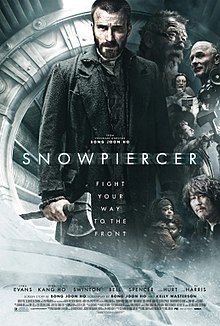Snowpiercer had some plot and character problems, but I'm interested in the scientific and technical problems at the moment, so let's go.
** spoiler alert **
Even if we grant that condition, there's no reason it had to go at top speed. Going slower would use less energy and reduce the chance of accidents.
In fact, the train's rulers should've had scientists monitoring the conditions outside. And they should've been glad to stop the train and send people outside--perhaps as punishment. Operating the train with ongoing social inequalities was like sitting on a ticking bomb. Eventually the system would explode.
The stolen children
I forget about the kidnapped children for a while, which is a storytelling flaw. And I didn't buy the answer to their disappearance: that they were serving as manual replacements for broken parts.
I thought the children were being taken to provide food--the Solyent Green cliché--or perhaps as slaves or pets. The replacement-part idea was unexpected, to be sure, but unbelievable.
First, kids would last for only a few hours in those hot, cramped cubbyholes before they passed out. No way could they perform the same repetitive tasks for weeks or months.
Second, the train must have millions of parts and materials that would wear out or break. It inevitably would require fixes that a human child couldn't manage. Like other self-contained vehicles--a ship, submarine, or starship--it would need mechanical engineers, machine-shop facilities, and probably a "docking port" where it could stop for repairs.
To give a related example, suppose your car ran out of brake fluid, a spark plug broke, or the battery died. This isn't a Flintstones cartoon where an animal performs every function. No living creature could substitute for the mechanical failure.
Overall, though, I enjoyed Snowpiercer. It deserves some Academy Award nominations and I hope it gets some. For its bold subject and style, I give it an 8.5 of 10.


No comments:
Post a Comment